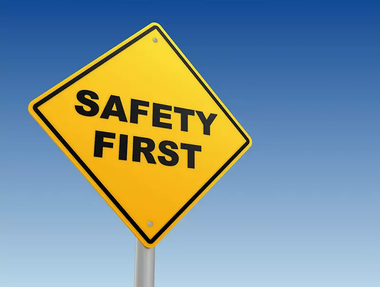
5 Types of Signs and How They Improve Workplace Safety
Safety signs may be considered one of the most basic and fundamental forms of safety equipment. For over 100 years, safety signs have been encouraged or required in specific parts of the workplace, spelled out in the primary language(s) of the workers. They save thousands of lives every year and continue to play an important role in preventing injuries in the workplace.
In 1941, standards for safety signs were introduced by the American Standards Association (later to become ANSI). These standards introduced formats for DANGER, CAUTION, NOTICE, and EXIT signs, to name a few. While many aspects of those early standards still hold today, globalization now has more of an effect. In 2007, ANSI published guidelines that coordinated with ISO label formats, ushering in a new era of global best practices in safety signs for the workplace.
continue reading
In 1941, standards for safety signs were introduced by the American Standards Association (later to become ANSI). These standards introduced formats for DANGER, CAUTION, NOTICE, and EXIT signs, to name a few. While many aspects of those early standards still hold today, globalization now has more of an effect. In 2007, ANSI published guidelines that coordinated with ISO label formats, ushering in a new era of global best practices in safety signs for the workplace.
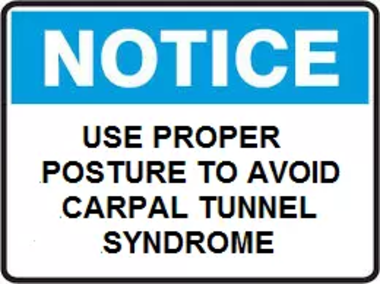
Carpal Tunnel Syndrome
When excessive continuous pressure is placed on the medium nerve, the nerve that allows feeling to parts of the hand, the condition known as Carpal Tunnel Syndrome develops. The primary symptom of Carpal Tunnel Syndrome (CTS) is numbness of the thumb, index finger and ring finger. When one bends a wrist forward for any length of time and feels pain it is a sure sign that CPS is present. The Occupational Safety and Health Administration (OSHA) have identified work related repetitive tasks, force, posture and vibration as major causes of CTS. A recent study showed that there is in many instances, a greater risk for CTS to affect worker production, than basic physical factors such as obesity. It should be noted that similar injuries caused by falls, slips, motor vehicle accidents or other similar accidents are not recognized as work-related causes of CTS by OSHA.
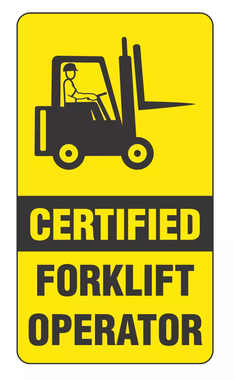
Fork Lift Safety
Fork Lift Trucks are used to raise, lower or move large objects or several smaller objects at the same time. They can be driven by an operator or mechanically controlled. In either case, identifying the hazards of moving heavy materials in this manner is of prime importance.
When heavy objects are moved from place to place, there is the possibility of at least some of the objects falling off the forklift. And as the objects can be well off the ground in a fork lift truck, it can lead to a serious accident. There is also the possibility as with all moving vehicles that someone walking nearby can be hit by the fork lift. Also, the driver may inadvertently make a wrong turn and crash into a wall, equipment or even another vehicle.
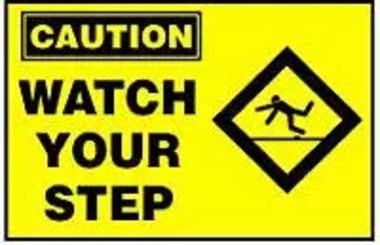
The Importance of Ergonomics
June is National Safety Month and there are many things we can do as employers and employees.
In the workplace Ergonomics is an important key to safety. This month is a good time to identify and abate musculoskeletal disorders (MSDs.) These include strains, sprains and tears, inflammation, pinched nerves and spinal disc problems. Here are some things we should all know about ergonomic programs and practices:
1. Visit the OSHA web page. There are grants to train workers about hazards and hazard abatement; training courses through the OSHA Training Institute, booklets on ergonomic programs, especially for computer workstations, and videotapes on general industry situations.
2. Ergonomics Best Practices Conferences: Designed to provide examples of practical and inexpensive programs; Intervention lectures.
3. Enforcement: Employers are required to provide working conditions that are free from known hazards that can cause an employer physical harm. Employers are keen to follow this policy not only to avoid fines, but because it is in their best interest to keep their staff on the job.
4. Corporate-Wide Settlement Agreements: Where companies have been cited for musculoskeletal disorder violations, they have agreed to enter into a settlement whereby they would agree to follow Meatpacking Guidelines that OSHA has set up.
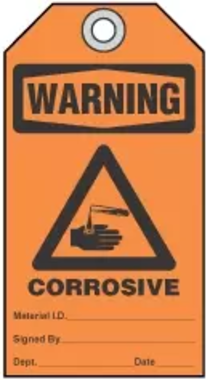
Chemical Hazards In The Workplace
The OSHA Regulation CFR1910.1200 “Toxic and Hazardous
Substances” is intended to address comprehensively the issue of classifying the
potential hazards of chemicals and communicating information concerning hazards
and appropriate protective measures to employees, and to preempt any
legislation or regulatory enactments of state, or political subdivision of a
state, pertaining to the subject.
Toxic Industrial chemicals are manufactured, stored,
transported and used throughout the world. They can be found in the form of
gas, liquid or solid state. The hazards they contain include carcinogens,
corrosives and reproductive hazards. Toxic chemicals can also be highly
flammable, combustible, explosive or reactive.
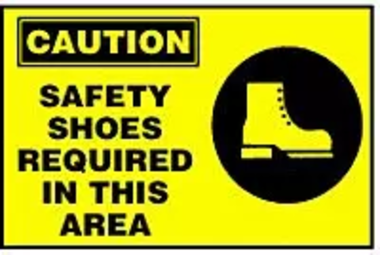
Protective Footwear
The Personal
Protective Equipment regulation, CFR 1910.136 has a very comprehensive set of
requirements when addressing employee’s foot protection. It states that “The
employer shall ensure that each affected employee uses protective footwear when
working in areas where there is a danger of foot injuries due to falling or
rolling objects piercing the sole, and where such employee’s feet are exposed
to electrical hazards. The ruling continues with the statement that protective
footwear must comply with The American Society for Testing and Material (ASTM)
regulation “Standard Specification for Performance Requirements for Protective
Footwear. And, by definition, that standard meets the qualifications
established by The American National Standards Institute (ANSI) regulation.
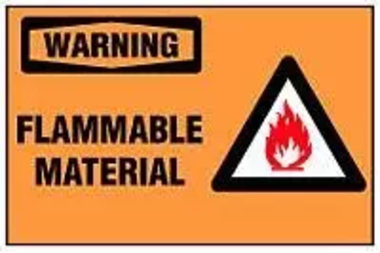
Hazardous Materials
Hazardous Materials in the form of solids, liquids or gases can be a danger to all living things, property and our environment. Because they are used in the manufacture and the shipment of all types of products they are very closely regulated. Within the regulations are the specifications for the clear labeling of these materials to announce their presence and thus to avoid the possibility of injury or damage. Developed by The American National Standards Institute (ANSI), Hazardous Material Symbols have become the international standard involved in identification labeling. Each hazardous material has its own specific symbol, colors, borders and printed information to help readily identify the danger one may encounter when coming in contact it. Besides the ANSI standard, many federal, state and local laws as well as international laws require Hazardous materials to be identified. Here is a listing of some of the basic Hazardous Material Symbols:
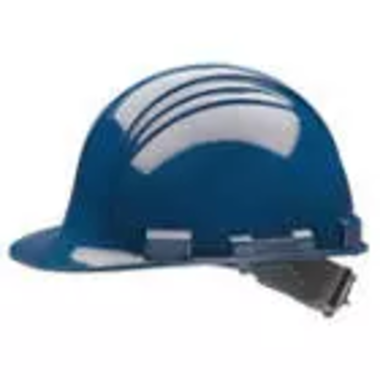
Hard Hat Protection
Employer Safety is the most important concern on the job. And Hard hats play an important role in worker protection. They are a relatively inexpensive way to protect against serious injury. The Occupational Safety and Health Administration, OSHA has very strict regulations regarding the use of Hard Hats for employees. Typical employees who must wear hart hats include but are not limited to: carpenters, electricians, lineman, mechanic, plumbers, assembler’s sawyers, welders, laborers, freight handlers, timber cutters and loggers and warehouse personnel. CFR 1910 135 (a) (1) states that each affected employee shall wear protective helmets when working in areas where there is a potential for injury to the head from falling objects. Furthermore, 135 (a) (2) states that Protective helmets designed to reduce electrical shock hazard shall be worn by each such affected employee when near exposed electrical conductors which could contact the head.
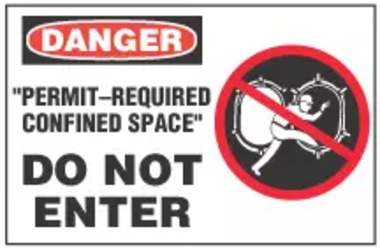
Confined Space Signs and Tags
The OSHA Confined Space Regulation, CFR1910.146 is designed to prevent accidents to employees when working in a space where one has limited or restricted access for entry or exit and while in that area might meet up with liquids, gases or obstacles. Thus, a person entering a confined space must be fully trained in the hazards to be faced and must wear the appropriate protective clothing. The area is also constantly monitored for air quality. Before entering a confined space area, one has to receive a “Confined Space Permit.” To help the process along, a series of signs and tags have been created. They contain proper procedures to follow, Caution and Danger announcements as well as directions for those both entering the area or assisting in the operation.
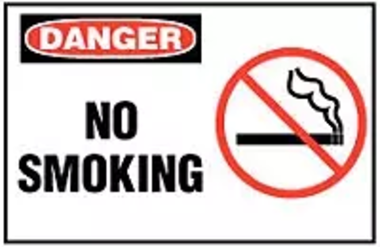
No Smoking Signs
A smoke-free workplace has many advantages. It reduces the amount of smoking by employees. It
also protects others from the dangers of second-hand smoke. Furthermore,
for the employer, it significantly reduces health care costs. People exposed to
smoke in the workplace are 17% more likely to develop lung cancer.
OSHA does
not have any regulations that apply directly to smoking in the workplace.
However OSHA does have standards which limit the exposure levels of a number of
chemicals. And many of the chemicals are found in tobacco smoke. They include but are not limited to limits on carbon
monoxide, nicotine, sulfur dioxide, ammonia, nitric oxide, formaldehyde and
arsenic. So essentially these require that is no smoking or very limited smoking take
place in the workplace. In addition, employers do have a legal right to both
restrict and also prohibit completely the use of tobacco. In some cases, of course, especially when flammable materials or hazardous machinery is present, it is imperative that smoking be prohibited.
To ensure regulations are followed and
workplace safety improved, a number of workplace signs have been created.
For example where chemicals are used the following
essential signs should be posted: DANGER, OXYGEN, NO SMOKING, NO OPEN FLAMES; DANGER,
BENZENE, CANCER HAZARD, FLAMMABLE – NO SMOKING, AUTHORIZED PERSONNEL ONLY.
RESPIRATOR REQUIRED!
In areas where
lead is present: WARNING, LEAD WORK
AREA, POISON!! NO SMOKING OR EATING. That sign may also include a skeleton
symbol.
When smoking is allowed in some places, a sign may announce: NO SMOKING
EXCEPT IN DESIGNATED AREAS.
Or some prefer low-key signs, such as: THANK YOU FOR NOT SMOKING. Those signs may include
the standard symbol of a cigarette within a circle with a diagonal red line
going through it.
In work areas
populated by multilingual employees the sign may be in more than one language.
An example of that kind of sign might state: NO SMOKING, NO FUMAR.
Signs may be constructed of durable vinyl, with pressure-sensitive backing (for adhering to walls or doors), tough rigid plastic, or the most durable of all, anodized aluminum signs.
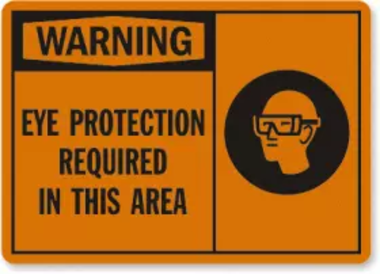
Eye Protection
Each year, there are countless work-related eye injuries. With the kind of eye protection available today and the comprehensive OSHA regulations in place these injuries could be and should be avoided. And along with the painful and serious injuries to the workers involved comes the cost of medical expenses, lost production time and worker compensation.
The OSHA regulations required employers to provide both eye and face protection against chemical, environmental, radiological as well as mechanical irritants and hazards. In addition, to protect against flying objects, workers must have side protection. Workers must use filtered lenses with a shade number that is appropriate for the type of work being performed. For example, there are a number of different welding operations. Each one requires its own minimum shade protection.
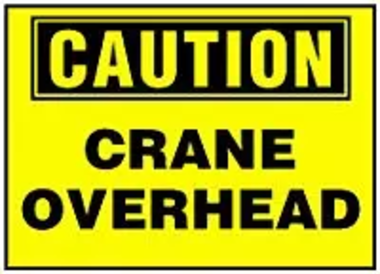
Fire Egress Signs
There is little or no warning that a fire has started and that it has quickly gone out of control.
So it is extremely important that all preparations for proper egress be made, including signage well in advance and then practiced (drilled) over and over so that there be no mistakes should there actually be a fire. With that in mind, OSHA created the Means of Egress Standard.
The first set of signs to be placed would include the name of the WARDENS.They are the people that the employer or someone designated by the employer selects to act as the leaders of groups of employees to assist in leading them to safe locations.
Other signage that should be placed at key locations throughout the facility is “Floor Plans” which clearly show the emergency escape routes. The use of color-coding for various groups can aid in knowing exactly where to go to leave the facility quickly. Another important sign would indicate the SAFE AREA to exit to. An exit sign has to be made to withstand harsh conditions, so they should be made from heavy-duty laminated plastic.
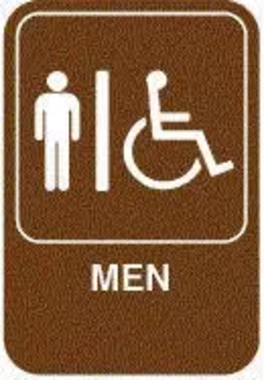
Handicap Access
ADA signs are designed and manufactured for Handicap persons. They follow the guidelines set up under the Americans with Disabilities Act. And with so many more handicapped employees now being hired under that act, these signs are becoming more and more prominent.
ADA signs can be found wherever a handicap individual will have to negotiate an entrance, a restroom or a walkway. The signs are generally made with heavy-duty lamination, or from steel or aluminum. All signs must have non-glare backgrounds and characters to help ease the way for the elderly and those with little or perhaps no vision.
While these signs are now beginning to be seen in and around factories, they are not the only type of ADA signs. There are also signs for the hearing impaired, people who are deaf and those that may have a mental disorder of some kind.
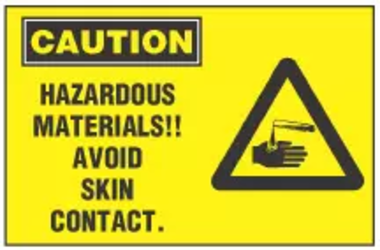
Protective Gloves
When evaluating the potential for injury to hands while working on equipment, if it is determined that general workplace practice will not in itself provide enough protection then protective equipment must be provided. This includes gloves, finger guards and arm coverings or elbow-length gloves. Machine guards can be shown to provide some protection, but certainly not enough to ward off possible injury.
There are many types of hazards that a worker’s hands may encounter and there are many types of gloves that are available for each of the hazards. It is extremely important that workers use the gloves that have been specifically designed for the type of hazard they face. When making the decision of what type of gloves to choose, the following must be considered: the type of chemicals handled, what type of contact will be encountered, the duration of the contact, what part of the hands or arms are involved, what type of grip is necessary, thermal protection, abrasion protection and the size and comfort needed by the worker.
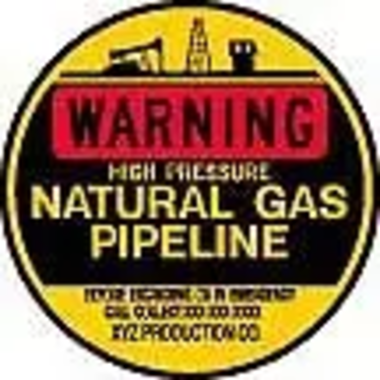
Proper Use Of Utility Signs
J49 CFR 192.707 – Line Markers for Mains and Transmission
Lines states: that when a pipeline is above ground that Line Markers must be
placed and maintained along each section of a main and transmission line that
is located above-ground in an area accessible to the public. Furthermore the following
must be written legibly on a background of sharply contrasting color on each
line marker: the work “Warning,” “Caution,” or “Danger” followed by the words
“Gas” (or the name of the gas transported) Pipeline.” Furthermore, all markers,
except those in heavily developed urban areas must be in letters at least 1
inch high with a ¼” stroke. In addition, the name of the operator and the area
code and telephone number where the operator can be reached at all times must
be included on the sign. The National
Electrical Code also has very specific rules governing underground signage.
Underground signs are also used to indicate water lines and phone cables.
continue reading